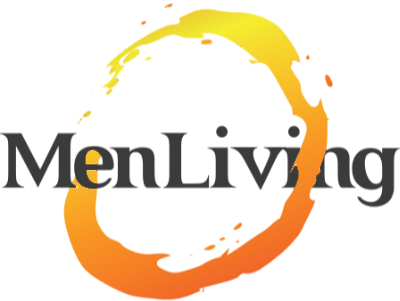Dr. Stacee Reicherzer knows exactly who she is and what makes her sparkle. But it wasn’t an easy road to get to self-discovery. Growing up queer and transgender in South Texas, she faced plenty of bullying and traumatic experiences for simply existing as herself. Her journey led Dr. Reicherzer, who has been a licensed professional counselor over the last 15 years, to publish her first must-read book, “The Healing Otherness Handbook: Overcome the Trauma of Identity-Based Bullying and Find Power in Your Difference.” It is the story of how to heal from emotional wounds and grow into accepting one’s differences as something that makes them beautiful. Dr. Reicherzer spoke with MenLiving’s Patrick McKenna about what inspired her to write her book, how to end the cycle of self-sabotaging oneself, learning to love what sets us apart from others and much more.
Patrick:
I want to start out by talking about your book “The Healing Otherness Handbook.” After learning about your story and knowing you’ve identified as a transgender woman for a long time, I know you’ve experienced being “othered.” Can you explain the process of landing on the term “otherness,” and why you chose to revolve the book around that term and that concept?
Stacee:
The experience of “otherness” and how I came to recognize it began for me when I was doing therapy work with a male couple in the mid-2000s. I was working with their couple dynamics. We were reaching this impasse, and I consulted with a colleague. He said, “What if you were to really ask each of these men what was the first time he knew what it meant to be gay?” When I did that and set it up as a form of trauma informed therapy, then it really lit up because each of these men had a traumatizing experience of gay identity development from his boyhood.
They were both in their mid-twenties. One had grown up in East Texas, and the other in Arkansas. There were deeply traumatic experiences they had. What I began to recognize was they’ve each carried these trauma experiences throughout their lives that have been compounded, made worse, and have been ruminated on. All kinds of developments happened in their lives as a result of these experiences. Then they tried to couple, and their relationship became a place where so much stuff was played out.
Patrick:
Interesting.
Stacee:
I was thinking about this with a colleague of mine who’s African American, and she was talking about an experience with her son. She said, “It’s interesting you talk about that first time that somebody was cast out after what happened when my son got in the car the other day.” Remember, this was about 15 years ago. She said, “I picked him up from school, he got in the car, and he was pouting. He was so sad. I said, “What’s wrong?” And he said, “Mama, am I black trash?”
Patrick:
Wow. That’s horrible
Stacee:
It was of course very hurtful for her as a mother to hear, but there was so much happening that she was aware from that day. No matter what she did to address the situation – which was talking to the schoolteacher, all these things which she and her husband did to advocate for their child – there was a very real awareness that this was the first time he knew what it means to be black in America, and it was a deeply traumatic one for him.
This started a series of conversations for me. I kept hearing people describe stories that were racially oriented that were like my own experiences in gender identity or queerness. I also heard stories from people’s experiences of neurodiversity, having ADHD or dyslexia, or having a physical disability that other people would label, look away or laugh at. There were so many parts of people’s experiences that were “otherness.” So, I began to recognize there’s something that we share in this. I wondered if there’s a way to begin thinking and talking about not only the phenomenon, but how we could begin to heal from it.
Patrick:
Yeah. Because if that healing isn’t part of the conversation, it’s unpacking things without being able to go forward.
Stacee:
That was the emphasis for me. Being a therapist, I’m always asking questions. “What can be better? What can we do to begin transforming these experiences so that we’re not spending the rest of our lives existing in a space of trying to feel a sense of worth?” It was an informative journey for me, and as I wrote the book, a lot of these ideas really crystallized for me personally as well.
Patrick:
Absolutely. The book discusses shame frequently, particularly the shame we put on ourselves. How do you think that act of internalizing shame impacts a person?
Stacee:
What’s gone on with shame is that we’ve gotten these external messages that said, “We’re worthless. We’re not as good. We’re damaged. We’re somehow inferior.” These messages came in a lot of different ways. Sometimes they’re very violent forms of human alienation, hatred, and oppression. That certainly is true for people who have grown up feeling bullied or even experienced hate crimes. Words are very powerful, and they shape our reality. Developmentally, when we receive these messages at an age when we’re still trying to figure ourselves out – which is true of early adolescence and most of our teenage years – we start to listen to the world around us, and we start doing the heavy lifting for all of our oppressors.
We start taking in their messages and start believing that we are not worthy because we exist in a world that treats us like we’re somehow inferior. It’s hard to combat that because what evidence do we have in our lives that we’re truly not? When the world has been shaped to treat us as inferior because of sometimes very big aspects of our being and our shared cultural identities, or very individual identities or experiences, it becomes difficult to not internalize messages that are so combative and oppressive. It’s so overwhelming.
Patrick:
How could it not be?
Stacee:
Exactly. We can see differences. We can see that we’re not like this other person. When that difference is something that is treated as an inferiority, it almost validates what we already have going on — that somehow, we are less than this other individual. That is a very difficult thing to overcome, and many people spend the rest of their lives existing in a place of shame because they never quite feel that they are as deserving or that they own a place at the table.
Patrick:
Self-sabotaging was another theme frequently discussed in the book. How do you think we as individuals can break that cycle of self-sabotaging ourselves and live happier, healthier lives?
Stacee:
It’s interesting because this is a conversation I have a lot in work that I do in training doctoral students to become counselor educators. It’s such an interesting while disturbing thing to see how often some of the most brilliant, inspiring people with fantastic skills and ways of being often will not only doubt their capability, but as they move closer toward reaching a goal, they start to really get kicked up with fear of it. They think, “What does it mean if I actually accomplish this? What if I’m a failure at it? What if I’m terrible at this thing that I’ve worked my whole life for?”
It’s this real fundamental fear of being exposed as this fraud. The shadow side of shame is that it sinks into everything, even into the lives of people who are doing great things and inspiring those around them in ways that they don’t even recognize. They’re oftentimes still so very doubtful, still so shame-instilled that as they start to approach something, it becomes terrifying because the end goal itself almost becomes this last bully to overcome. Isn’t that fascinating how we do that?
Patrick:
It is. I also liked in the book how you talked about the role that “otherness” systemically plays into our lives, specifically when we’re thinking about how those feelings of being “othered” came from a person close to that individual, like a family member. You broke it down to it not just being an individual’s decision making; there’s influence by the system they grew up in and what they’re told. Why do you think it’s necessary to examine that element of this cycle and recognize it as important to healing from this identity-based shaming and trauma?
Stacee:
My observation is that within many cultures – and I grew up in South Texas, so I can speak very specifically to white middle-class culture and what people believe within that – there are very specific ways of being that are instilled. This is how people have learned to survive in the world around them. So, in this case, we’re talking about a culture that, most certainly when I was growing up and is still largely true, is very gender stratified. There’s a strong emphasis on the gender binary. There is a strong emphasis on what it means to be a man, what it means to be a woman, and what it means to not show weakness. The emphasis is on behaviors and in appearance, in addition to what the neighbors think. I recognize that much of this has been based on long-term survival strategies of how to be in the world.
But what happens is that a child growing up in that space who has “otherness” going on –whatever their “otherness” is from their family of origin – there are so many ways that people can be very different from their family origin. Because they’re queer, their body shape, their neurology, or because they have a dream of being a dancer in a family of factory workers or have something else. Oftentimes, there is a very strong emphasis to conform and to learn to exist within these cultural norms. The problem is that when this happens, nobody’s correctly interrogating the broken culture that continues from one generation to the next. What needs to be able to happen is that individual coming out of a culture like the one I’ve described has a spark of something that we would wish to see encouraged. Because there are, as we now know, fantastic things that people with neurodiverse perspectives accomplish.
Patrick:
Absolutely. I thought of the anecdote in the book where you witnessed a little girl who said, “Oh, I could be a plumber”. Then the mom said, “We don’t do that.” There was such firm shutdown of even the thought.
Stacee:
Yes, I remember it very vividly because we were at the party. There was a nice house down the road, and someone said, “Oh, that guy’s a plumber.” The woman said to her daughter, “Marry a plumber.” And I said, “She could be a plumber.” And the response was, “Nobody’s going to hire a female plumber.” There’s also the embedded part that’s probably a big part of her thinking of “What man is going to marry a female plumber?” Because of this embedded notion that the man should somehow have notions of who he is in the relationship, and that might take her out of a particular pool. You can see how this stuff becomes so embedded. These aren’t at all dumb people, but these are people who exist within a culture where these norms have been so accepted that they’re not even interrogating them.
Patrick:
This is a question I’m sure you can answer from a personal perspective and from a working therapist’s perspective as well. Why do you think dealing with a person’s trauma and mental health issues they might have, from the ground up, is so important to their healing?
Stacee:
Well, my philosophy in my work with trauma is that trauma has very deep roots. When people have an experience where they have tremendous anxiety about being in a situation or an event where people have deep experiences of fear, there’s a place where those things began. If we can understand where things began, then we can really start to uproot them. If you’ve got an invasive weed that’s growing in your yard and really taking over, it’s not going to do any good if you’re just clipping the leaves off it. Weeds must be uprooted.
Patrick:
That’s a great analogy.
Stacee:
Trauma work like this is a deep exploration of examining the question of “Where was this learned?” If we can ask that question and the person starts to interrogate it, then they can see how something was learned in a very backward, incorrect place. The more they work to do that, the more they can begin unlearning some of this traumatic experience that has informed so much of their fears, anxieties, and challenges in their life today.
Patrick:
Now, of everything that you’ve learned between your life and writing this book, was there a particular revelation that you had that led you toward being able to begin healing and loving and living with your full self?
Stacee:
There were a few different things that were going on because I learned a lot about being vulnerable through my own therapeutic process. I’m a big advocate of people doing this kind of work. But also, there was an “aha” moment because as a transgender woman, when I first transitioned, the emphasis was on passing as cisgender. It was both an external emphasis that even psychiatrists said, “Hey, if you want to survive successfully in this world, you’ve got to learn to pass.” Everything was coaching me, a young trans woman, on how to pass. I really believed that I needed to do that.
I was at the ballet, and it was… I don’t know. I can’t tell you what exactly it was. Maybe it was the freedom of the dancers, or maybe it was the magic of the whole atmosphere. There was something that made me realize and think, “I have every right to be here as much as everybody else. I have a right to be here as a fully actualized gendered being. It doesn’t really matter if people see me as trans or not. I don’t require passing in my life. I don’t require myself to be seen as anybody other than who I am. And if they see me as somebody else, that’s okay, too. Because we’re all just there to enjoy the show.”
I realized that I really am just as good as everybody else, which seems like something so fundamental, but it wasn’t something that even occurred to me until within the last 10 years. To recognize that I truly deserve a place at the table, and I can show up as I do, was so huge. I don’t have to script or edit myself just to move through the world.
Patrick:
Just be you.
Stacee:
Yeah. Just to be me. That’s a powerful, powerful thing. At the same time, I also recognize there are instances where passing is still survival. Sometimes we must do it. I know I still must do this sometimes just to survive. My family lives in Texas. I can’t just go anywhere in Texas and be this out transgender woman, you know?
Patrick:
Yeah, definitely.
Stacee:
There’s an awareness of what it means to move through that world, but also to do so without feeling ashamed or that there’s something that diminishes me. For a long time, I really believed that I was inferior to cisgender women and cisgender people in general and ranked myself according to how much I passed as cis. I think the thing I’ve come to realize is I distinctly don’t wish to have to pass anymore. I love un-passing. I love being able to be me. And if I can love being me, then maybe in some small way I could help somebody else feel more fully alive in their own skin.
Patrick:
That’s so powerful and beautiful! What’s the biggest message or sentiment you would want to get across to someone reading this who is struggling with being cast out as “othered” or feeling less than due to their identity?
Stacee:
The message I would want to give is to lean in. Lean into what feels real for you and who is real for you. But trust that as you do so, there’s going to be places of discovery that will feel like setbacks. A setback can sometimes be something we believe is an enormous barrier that’s telling us not to go forward, and that’s not so. Understand that our lived experiences will continue to shape us. As we discover our own selves, we’re also discovering the contours of the world around us, where we exist with it and how to exist with it.
So, my takeaway message is keep showing up. Keep showing up and being daring. As you do so, you’ll start to break those barriers down. You’ll start to find your authentic voice and your way of being. I encourage people to to lean toward the great potential for joy and a vision for what they’re wanting and needing for themselves. My hope is that we can all learn to do that, and to imagine how these conversations can continue to happen, inspire, and spark new thoughts.
To learn more about Dr. Stacee Reicherzer, her book and her other work, click here



